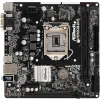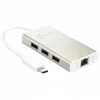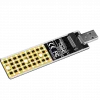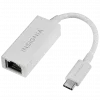A January 2013 press release from the USB group revealed plans to update USB 3.0 to 10 Gbit/s. The group ended up creating a new USB version, USB 3.1, which was released on 31 July 2013, introducing a faster transfer mode called SuperSpeed USB 10 Gbit/s, putting it on par with a single first-generation Thunderbolt channel. The new mode's logo features a "Superspeed+" caption (stylized as SUPERSPEED+). The USB 3.1 standard increases the data signaling rate to 10 Gbit/s in the USB 3.1 Gen2 mode, double that of USB 3.0 (referred to as USB 3.1 Gen1) and reduces line encoding overhead to just 3% by changing the encoding scheme to 128b/132b. The first USB 3.1 implementation demonstrated transfer speeds of 7.2 Gbit/s.
The USB 3.1 standard is backward compatible with USB 3.0 and USB 2.0.
In 2015, USB 3.1 was renamed USB 3.1 Gen2 to differentiate it from USB 3.1 Gen1 (5Gbps, formerly USB 3.0). It initiated a new naming scheme where the data speed is referred to by Generation number.











